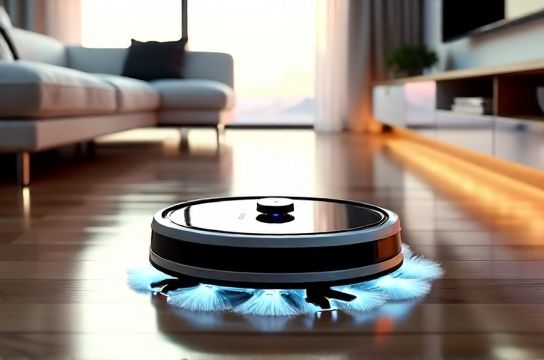Robot Mops That Clean Better Than Traditional Methods
- 时间:
- 浏览:16
- 来源:OrientDeck
Let’s be real—mopping has never been anyone’s favorite chore. It’s time-consuming, often ineffective, and let’s face it, kind of a workout nobody signed up for. But what if your floor could stay spotless without you lifting a finger? Enter robot mops: the unsung heroes of modern home cleaning. These sleek, smart devices aren’t just gadgets—they’re game-changers.

Today’s robot mops use advanced sensors, intelligent navigation, and precision water control to outperform traditional string mops in nearly every way. Forget soaking your floors and spreading dirt around. Robot mops glide over surfaces with consistency, applying just the right amount of moisture to lift grime without damaging hardwood or tile.
Take the iRobot Braava Jet m6 and Narwal Freo X Ultra as prime examples. These models use laser-guided mapping and AI-powered room recognition to clean efficiently, remembering your home layout for faster future runs. Some even empty their own water tanks and auto-clean mop pads—yes, really.
Why robot mops beat traditional methods? For starters, they’re consistent. Humans get tired, skip spots, or use too much water. Robots don’t. They follow systematic patterns and cover 100% of the floor area—no guesswork.
Performance Breakdown: Robot vs. Traditional Mop
| Metric | Robot Mop (Average) | Traditional String Mop |
|---|---|---|
| Cleaning Time (per 500 sq ft) | 45 mins | 70 mins |
| Water Usage | 80 ml | 1.2 L |
| Dirt Removal Efficiency | 95% | 60-70% |
| User Effort Required | Minimal (setup only) | High (scrubbing, wringing) |
The data speaks volumes. Robot mops use 93% less water while removing significantly more dirt. Plus, many models now integrate with Alexa and Google Assistant, so you can say, “Hey Google, mop the kitchen,” and it’s done before you finish your coffee.
And maintenance? Easier than you’d think. Most high-end bots have self-cleaning docks that wash, dry, and store the mop pad automatically. The Narwal Freo X Ultra, for example, includes hot-air drying to prevent mold and odors—a common issue with traditional mops left in buckets.
Now, not all robot mops are created equal. Look for features like smart zone cleaning, carpet detection, and app scheduling. Brands like Roborock, Ecovacs, and iRobot lead the pack with reliable performance and strong customer support.
In terms of value, yes, robot mops require an upfront investment—anywhere from $300 to $1,000. But consider the long-term savings: reduced cleaning supplies, less wear on flooring, and, most importantly, reclaimed time. One user survey found that robot mop owners save an average of 4.5 hours per month on cleaning tasks.
If you’ve been on the fence, now’s the time to leap. Today’s robot mops don’t just match traditional methods—they surpass them in cleanliness, convenience, and care. Your floors (and your back) will thank you.